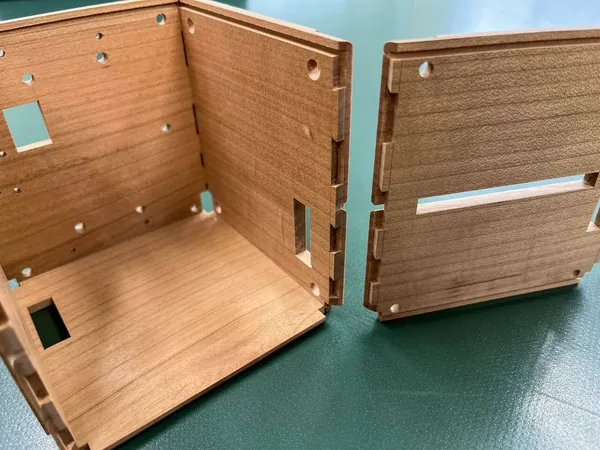
Japan's Revolutionary Wooden Satellite Makes Historic Departure from the ISS!
2025-01-08
Author: Sarah
Introduction
In a groundbreaking venture, Japan's LignoSat, the world’s first wooden satellite, has officially been deployed into orbit from the International Space Station (ISS). Launched in November 2024, this ambitious project is aimed at exploring whether wood can be utilized as a viable material for spacecraft construction—a concept that, if successful, could transform the future of aerospace engineering.
Objective of LignoSat
The primary objective of LignoSat is to assess how honoki magnolia, the type of wood chosen for its construction, reacts to the harsh conditions of space, including exposure to cosmic radiation. The mission also involves critical research on geomagnetic levels to investigate whether the geomagnetic field penetrates the satellite’s structure, potentially affecting its electronic systems.
Construction and Design
This innovative satellite measures 10 cm in length and is constructed using traditional Japanese woodworking techniques, specifically the “Blind Miter Dovetail Joint,” which eliminates the need for glue or nails. This method not only showcases Japan’s rich craftsmanship but also exemplifies how natural materials can combine artistry with functionality in modern technology.
Historical Context
Historically, three other wood species had been tested in space, but none have ventured to the extent that LignoSat aims to achieve. The Japanese Aerospace Exploration Agency (JAXA) is championing sustainability in spacecraft construction, positioning wood as an eco-friendly alternative to metals like aluminum, which dominate current designs. As more countries launch satellites—like SpaceX's recent deployment of 24 Starlink satellites—the need for greener materials becomes increasingly urgent.
Expert Insight
Koji Murata from the Graduate School of Agriculture at Kyoto University emphasized the potential implications of this project: “If the launch of the wooden satellite proves that timber can be used in space, it should change how we view timber on Earth and lead to new applications and a reevaluation of the material.”
Conclusion
While LignoSat is expected to remain in low Earth orbit for several months before re-entering the Earth’s atmosphere and burning up, its success could pave the way for future innovations in eco-friendly materials within the aerospace sector. Watch out for updates on this pioneering satellite experiment that promises to alter our understanding of materials in space! Could this be the beginning of a timber revolution in outer space? Only time will tell! Stay tuned for more exciting developments!
 Brasil (PT)
Brasil (PT)
 Canada (EN)
Canada (EN)
 Chile (ES)
Chile (ES)
 Česko (CS)
Česko (CS)
 대한민국 (KO)
대한민국 (KO)
 España (ES)
España (ES)
 France (FR)
France (FR)
 Hong Kong (EN)
Hong Kong (EN)
 Italia (IT)
Italia (IT)
 日本 (JA)
日本 (JA)
 Magyarország (HU)
Magyarország (HU)
 Norge (NO)
Norge (NO)
 Polska (PL)
Polska (PL)
 Schweiz (DE)
Schweiz (DE)
 Singapore (EN)
Singapore (EN)
 Sverige (SV)
Sverige (SV)
 Suomi (FI)
Suomi (FI)
 Türkiye (TR)
Türkiye (TR)
 الإمارات العربية المتحدة (AR)
الإمارات العربية المتحدة (AR)